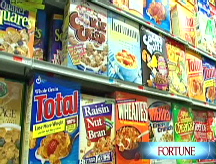Stimulus sends personal income surging
The government's $48.1 billion in economic stimulus checks payments play a key role. Personal spending grows.
NEW YORK (CNNMoney.com) -- Personal income surged in May as the government's stimulus payment plan to jump-start the economy took effect, according to a report released Friday.
The Commerce Department said individual income shot up 1.9% in May as a result of $48.1 billion economic stimulus payments in the month.
Stimulus checks accounted for a huge 5.7% rise in disposable income, versus a 0.4% increase in the previous month.
Disposable income is what individuals have left over after they pay for their essentials such as food, bills and taxes.
"Income growth was pretty good... even if you exclude [stimulus]," said Scott Hoyt, senior director of consumer economics at Moody's Economy.com.
Excluding stimulus payments, personal income rose 0.4%, which had been anticipated by a poll of economists by Briefing.com, up from 0.3% from April.
The government has been distributing the stimulus payments every week since late April, but began sending out the bulk of its payments in May. The payments amount to $600 per person and $300 per child for families, for those who meet qualifications.
As of June 20, more than $70.8 billion has been distributed since April 28, according to Treasury Department figures.
The Commerce Department also said personal spending by individuals rose 0.8% in May, slightly more than the 0.7% increase expected by the Briefing.com poll.
When adjusted for inflation, personal income rose 5.3%, while personal spending rose 0.4%.
"Clearly consumers are spending at least some of the rebate check," said Hoyt. But he cautioned that it was too early to tell if the temporary increase will have a long-term economic benefit.
Consumers increased their savings rate, as a percentage of disposable income, to 5% in May from 0.4% in April. Stimulus payments that go into savings or are used to pay off debts instead of being spent won't give the intended economic boost.
"We think it's fleeting" said Michelle Meyer, economist with Lehman Brothers.
Consumers will respond to the increase in income and boost their spending over the next few months. Faced with high prices of food, fuel, and decreasing home values, consumers "will ultimately pull back once the rebate has been spent," she said.
When adjusted for changes, the Commerce Department said prices for all goods and services, including food and fuel, rose 0.4% in May. The consumer cost of food and fuel have gone up significantly as commodity prices have continued to rally.
The price of corn, a staple ingredient in many food and animal feed products, is selling above $7.50 a bushel, about 119% more than a year ago. Meanwhile the price of crude oil, which is refined into gasoline and diesel fuel, is trading above $140 a barrel, which has driven gasoline prices over $4 a gallon.
When food and fuel prices were excluded, prices only rose 0.1%, identical to April's increase. ![]()





